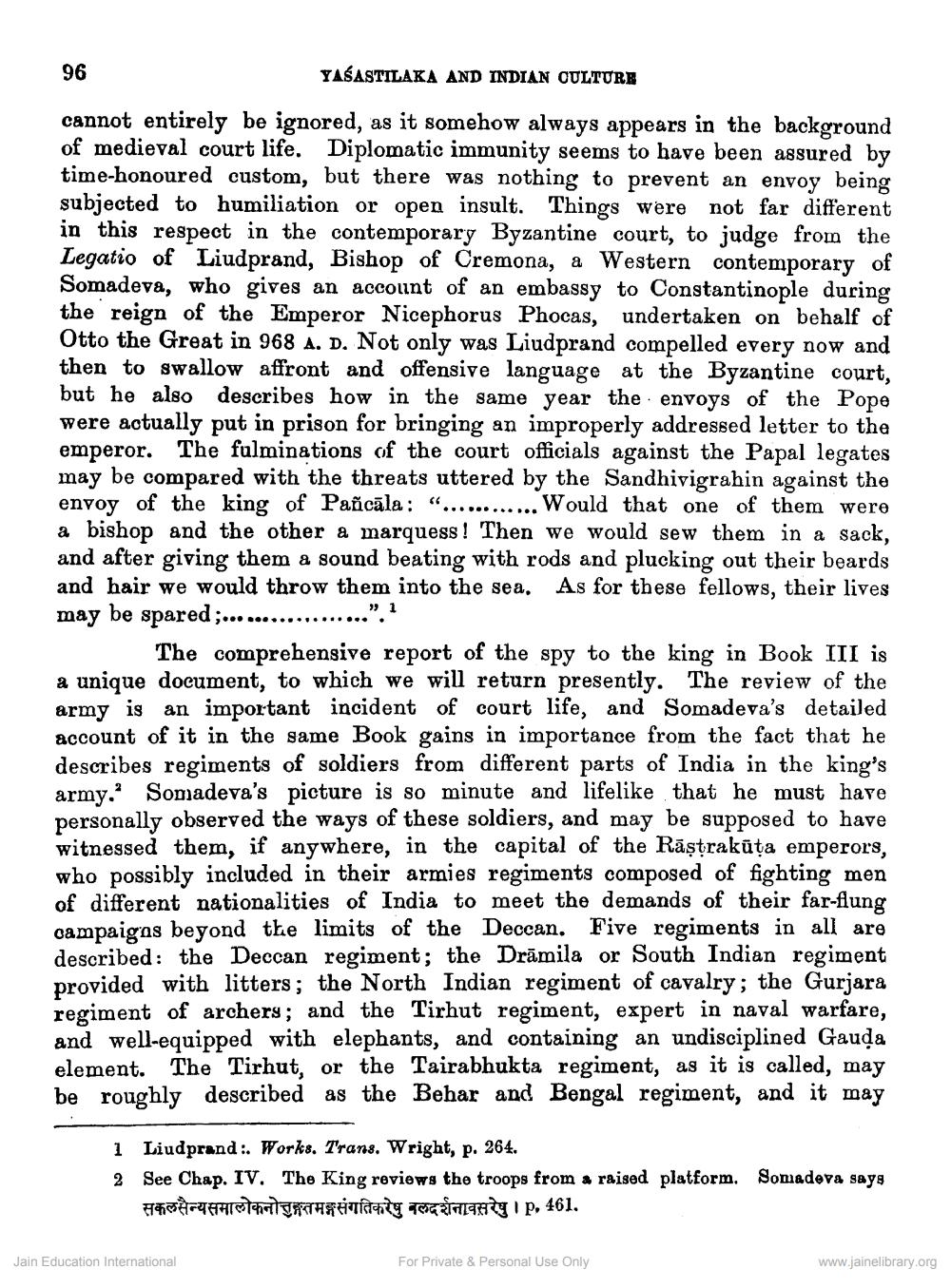________________
96
YAŠASTILAKA AND INDIAN CULTURE
cannot entirely be ignored, as it somehow always appears in the background of medieval court life. Diplomatic immunity seems to have been assured by time-honoured custom, but there was nothing to prevent an envoy being subjected to humiliation or open insult. Things were not far different in this respect in the contemporary Byzantine court, to judge from the Legatio of Liudprand, Bishop of Cremona, a Western contemporary of Somadeva, who gives an account of an embassy to Constantinople during the reign of the Emperor Nicephorus Phocas, undertaken on behalf of Otto the Great in 968 A. D. Not only was Liudprand compelled every now and then to swallow affront and offensive language at the Byzantine court, but he also describes how in the same year the envoys of the Pope were actually put in prison for bringing an improperly addressed letter to the emperor. The fulminations of the court officials against the Papal legates may be compared with the threats uttered by the Sandhivigrahin against the envoy of the king of Pañcāla: “............ Would that one of them were a bishop and the other a marquess! Then we would sew them in a sack, and after giving them a sound beating with rods and plucking out their beards and hair we would throw them into the sea. As for these fellows, their lives may be spared ;...................
The comprehensive report of the spy to the king in Book III is a unique document, to which we will return presently. The review of the army is an important incident of court life, and Somadeva's detailed account of it in the same Book gains in importance from the fact that he describes regiments of soldiers from different parts of India in the king's army, Somadeva's picture is so minute and lifelike that he must have personally observed the ways of these soldiers, and may be supposed to have witnessed them, if anywhere, in the capital of the Rāstrakūta emperors, who possibly included in their armies regiments composed of fighting men of different nationalities of India to meet the demands of their far-flung campaigas beyond the limits of the Deccan. Five regiments in all are described: the Deccan regiment; the Drāmila or South Indian regiment provided with litters; the North Indian regiment of cavalry; the Gurjara regiment of archery; and the Tirhut regiment, expert in naval warfare, and well-equipped with elephants, and containing an undisciplined Gauda element. The Tirhut, or the Tairabhukta regiment, as it is called, may be roughly described as the Behar and Bengal regiment, and it may
1 Liudprand :: Works. Trans. Wright, p. 264. 2 See Chap. IV. The King reviews the troops from a raised platform. Somadeva says
49ersthilg Thütfly TOGETH I p, 461.
Jain Education International
For Private & Personal Use Only
www.jainelibrary.org




